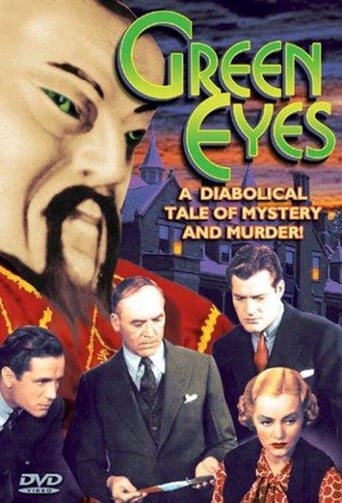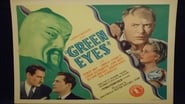mark.waltz
Here's the scenario: costume party in progress, body found. Scream. Detective arrives. Questions behind. Romantic couple on the road, decide to go back. More questions asked. Couple asked why they left. Suspicions arise. Accusations and hints of motives are made. Servants indicate they hated the victim. Suspects go to bed and can't sleep. Questions continue the next day. More clues, more motives. Gather suspects together and reveal exactly what happened. Will the guilty party give themselves up without pulling out a gun? You'll find out in under an hour in this stagy, often awkwardly acted melodrama.Forgotten matinee idols Charles Starrett and Shirley Grey are the romantic leads with a cast of actors who either speak very slowly or overly emote or pose or just bellow. Claude Gillingwater, best known for Shirley Temple movies, is perhaps the most familiar member of the cast, with the rest of the cast extremely obscure. The actress playing the housekeeper may look like Mary Gordon (and sound like like her), but is not. This is a film for severe classic film fans only. Others will be excruciatingly bored.
BA_Harrison
Made in 1934, less than a decade after the introduction of the 'talkie', this crusty old murder mystery makes the most of the relatively new sound technology, being 99.9% talk—which, consequently, makes the film 100% boring.Rather than concentrate on thrills and suspense, Green Eyes is all about the post-murder investigative procedure carried out by Inspector Crofton (John Wray), with a little amateur sleuthing from crime novelist Michael Tracy (Charles Starrett). Theories are bandied back and forth, clues are discussed, and suspects are interviewed at length, none of which is in the slightest bit entertaining.It's a whole load of talk, followed by some more talk, a little chit-chat, a bit of conversation, more talk, even more talk, and then… well, you get the idea. By the end of this film, you'll be wishing that Al Jolson had kept his mouth shut and that the 'talkie revolution' had never happened.
MartinHafer
During the 1930s, Hollywood made a ton of murder mysteries. While they continued to make some in the 40s, the 30s was by far the most prolific period--and most of them were B-movies. These Bs had relatively unknown actors, simple plots and usually ended in about an hour...more or less. And, because I love old films, I've seen so many that they're all starting to look the same.Take, for instance, "Green Eyes". It has all the elements you'll find in such a murder film. There is always a know-it-all guy who isn't with the local police--in this case a guy who writes murder mysteries who just happens to be there. There are misdirections galore--with too many folks lying and a supposed suicide to cover up the real murder. The plot is also, at times, too complicated and full of unnecessary details (such as the whole green eyes angle). Not surprisingly, the well-trained professional cops are complete morons. Heck, by watching these films you'd think cops NEVER solved crimes more taxing than jaywalking! And, the film is made entirely of unknown actors. No, none of the film is all that original or all that good, though I did like that they made the writer a bit of a smart-mouth. Worth seeing if you're not yet sick of the genre, but there certainly are similar yet better films out there--such as any of the Charlie Chan films or "Footsteps in the Dark".
kidboots
Dorothy Revier, a former Wampas Baby Star of 1925, specialized in vamps, and in many of her films she was the only reason to watch them. Not this film though, which boasts a strong cast (Charles Starrett, Shirley Grey) and an ending with a twist. With most of the filming done on a palatial mansion set from Universal, the production values were high.The guests at a midnight masquerade are shocked to find their host Stephen Kester (Claude Dillingwater) has been stabbed to death. Meanwhile Kester's grand daughter Jean (Shirley Grey) has eloped with Cliff (William Bakewell) who informs her that not only has he tampered with the guest's car ignitions so they can't be followed, he has cut the phone wires as well. The police stop them and as suspects, they are taken back to the house.Mystery writer Bill Tracy (Charles Starrett, surprisingly providing comic relief) is eager to help but only succeeds in upsetting the police. Everyone has an alibi of sorts but Lenox, the butler, reveals that Kester was greatly disliked, and that he overheard Kester and Hall (Arthur Clayton) having a business argument. When Cliff, who seems to be the most suspicious character in the film, is questioned he denies he and Jean are anything but good friends and Mrs. Pritchard's (Dorothy Revier) evidence is damning - making Jean a prime suspect. It then comes out that Kester had disinherited Jean but had not signed a new will. Jean's personality does not help matters - she comes across as a spoiled brat, annoyed because her grandfather has cut off her allowance.Things seem to be getting somewhere when Hall, who is chief suspect (Kester robbed him of valuable mining stock in 1914) is found shot - an apparent suicide. There is even a note explaining things. In it Hall tells of his friendship with Jean's mother and how, because of Kester's greed, she was forced to work long hours to support herself and her baby - work that eventually killed her. Hall decides to get revenge.....That's not the end and the twist is what separated "Green Eyes" from all the other mystery films that flooded theatres in 1934. Recommended.




